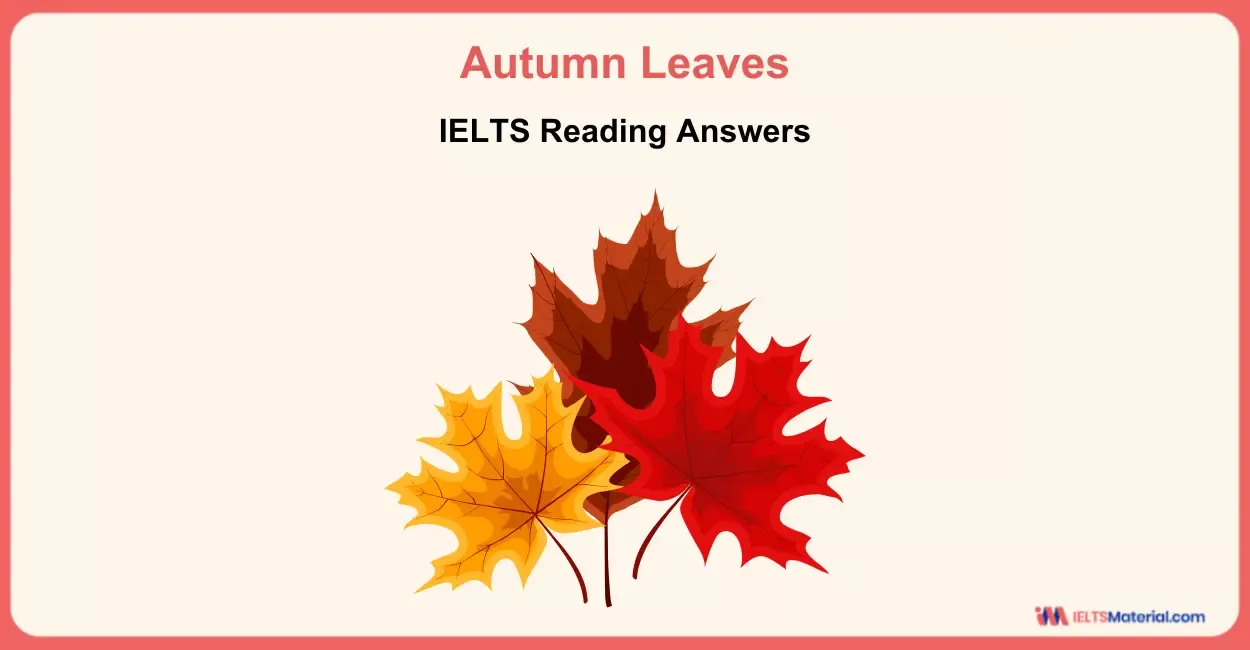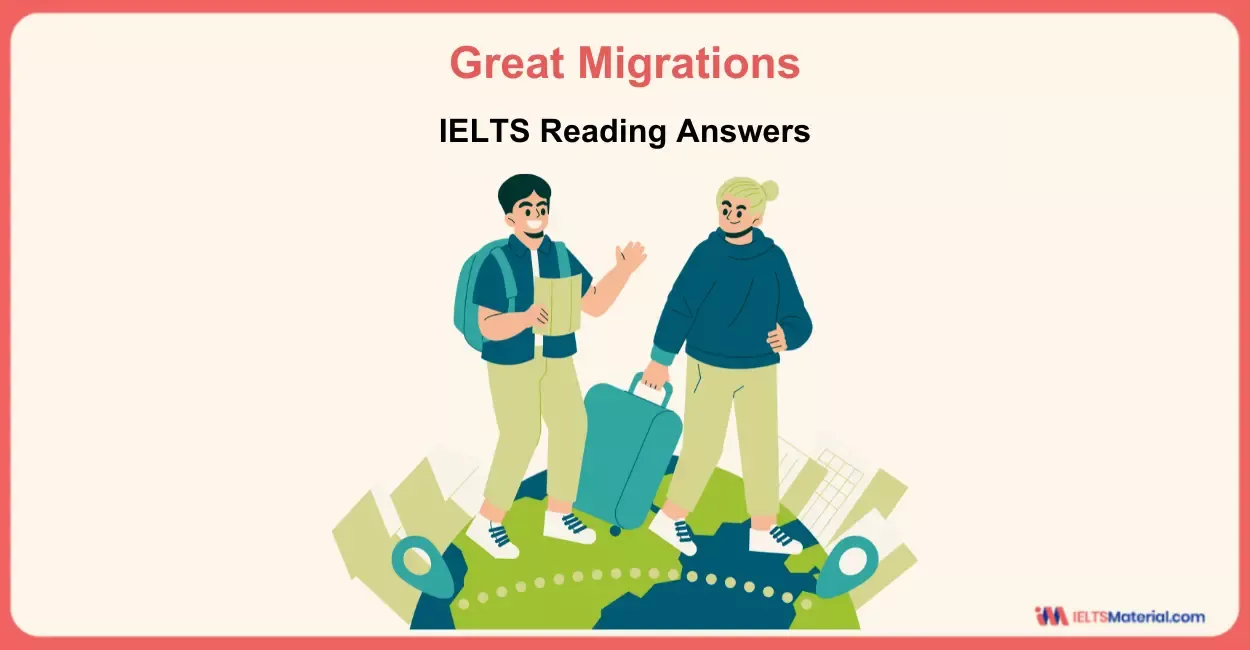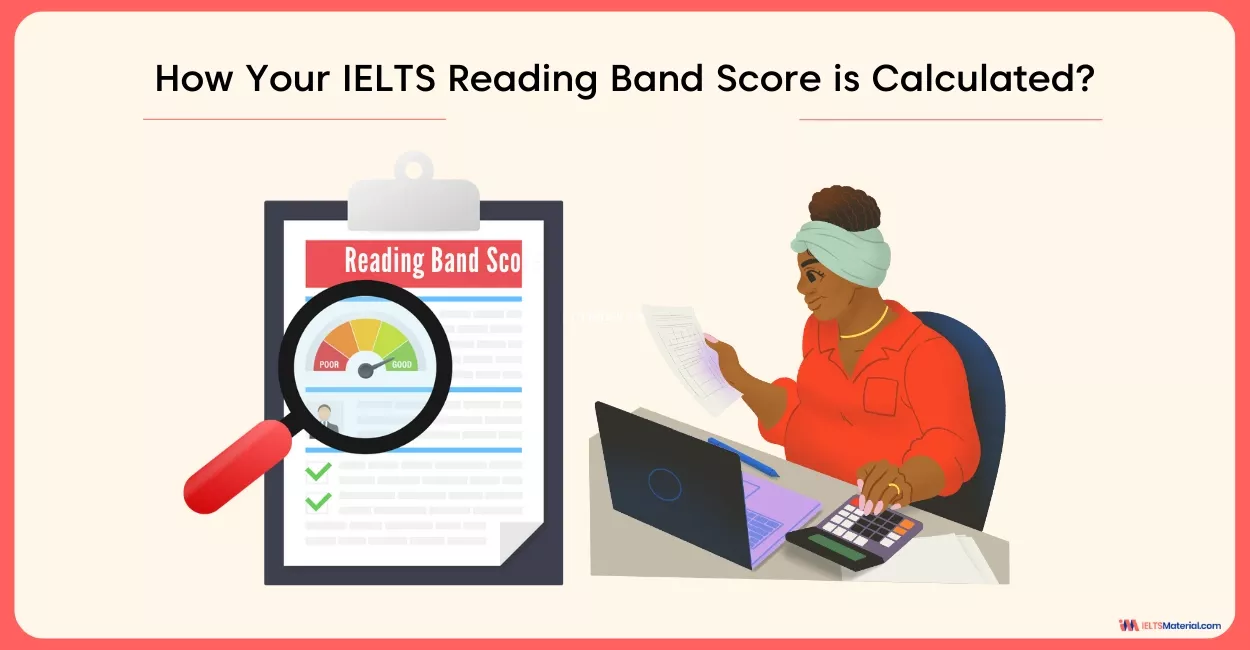Why are Finland's Schools Successful? - IELTS Reading Answers
10 min read
Updated On
-
Copy link
Explore band 8+ tricks to attempt note completion and matching headings type of questions in the IELTS Reading passage, ‘Why are Finland's Schools Successful’. Also, level up your prep with detailed answers and explanations .
Table of Contents
- Types of Questions in IELTS Reading Passage ‘Why are Finland's Schools Successful’
- How to Attempt Questions in the Passage ‘Why are Finland's Schools Successful’ to Get a Band 8+?
- IELTS Reading Passage on ‘Why are Finland's Schools Successful’
- Answers with Location and Explanation on IELTS Passage - Why are Finland's Schools Successful

Limited-Time Offer : Access a FREE 10-Day IELTS Study Plan!
The Academic passage, Why Are Finland’s Schools Successful? IELTS Reading Answers, is a reading passage that consists of 13 questions. With diligent practice, the IELTS Reading can be the top-scoring category for IELTS aspirants. To score well, you must understand how to approach and answer the different question types in the Reading Module.
By solving and reviewing Sample Reading Questions from past IELTS papers, you can ensure that your Reading skills are up to the mark. Take the practice test: Why Are Finland’s Schools Successful? below and try more IELTS Reading Practice Tests.
Connect with our band 9 IELTS Trainers to crack your IELTS Reading in no time! Book a FREE Demo.
Types of Questions in IELTS Reading Passage ‘Why are Finland's Schools Successful’
Before you attempt the passage, let’s get you accustomed to different types of questions which you would encounter in the passage ‘Why are Finland's Schools Successful’. This will help you note the strengths and weaknesses of every question to succeed and will build critical thinking while sharpening concentration.
The question types found in this passage are:
- IELTS Reading Matching Headings (Q. 1-6)
- IELTS Reading Note Completion (Q. 7-13)
How to Attempt Questions in the Passage ‘Why are Finland's Schools Successful’ to Get a Band 8+?
To score more in the reading section, incorporate a few tricks into your preparation so that you can see a gradual increase in your band scores. Therefore, before you attempt the passage, you might want to keep some IELTS Exam Preparation Tips for Band Score of 8+ in mind. With a focused strategy, you will be able to tackle the two types of questions with ease and confidence. The following are some of the tricks which can guide you as you answer the questions given in the passage, ‘Why are Finland's Schools Successful’.
- Practice skimming and scanning techniques instead of working through every detail provided in the passage. Such skills will help you to increase your reading speed and accuracy for the exam day.
- It is necessary to attempt each question type at first so that you would know the exact strategy to use and find the correct answer. This would enhance your skills at answering different question types, making you prepared for diving into the full-length tests.
- Time Management for IELTS Reading plays a very important role if you want to achieve a band 8+. This is why you should use a timer so that you can train your mind to work against the distraction of time. In this process, you will learn when to spend time on which part and how to distribute time effectively.
- Always read instructions carefully before attempting any questions because your answers need to be in the format mentioned in the instruction box.
- It is crucial to know How to Ace IELTS Reading with 'Keyword Technique' so that you can decode the information and spot the information given in the passage.
- For Note Completion type of question, fill the blank with the word which fits within the sentence. For this, try to guess whether it is a noun, verb, or an adjective to narrow down your options for which you can prepare well from all IELTS Grammar topics.
- The information for note completion would be provided sequentially in the passage. Therefore, try not to spend too much time on one question and move on to the next one. You can always come back to it later.
- For Matching headings type of questions, the test taker should understand which particular option fits the paragraph best, rather than choosing an option based on the matching of keywords.
Curious to learn how to improve your reading skills to get a band 9? Check out the video below!
IELTS Reading Passage on ‘Why are Finland's Schools Successful’
You should spend about 20 minutes on Questions 1-13, which are based on the Reading Passage below.
Why are Finland’s Schools Successful?
A At Kirkkojarvi Comprehensive School in Espoo, a suburb west of Helsinki, Kari Louhivuori, the school’s principal, decided to try something extreme by Finnish standards. One of his sixth-grade students, a recent immigrant, was falling behind, resisting his teacher’s best efforts. So he decided to hold the boy back a year. Standards in the country have vastly improved in reading, math and science literacy over the past decade, in large part because its teachers are trusted to do whatever it takes to turn young lives around. ‘I took Besart on that year as my private student’, explains Louhivuori. When he was not studying science, geography and math, Besart was seated next to Louhivuori’s desk, taking books from a tall stack, slowly reading one, then another, then devouring them by the dozens. By the end of the year, he had conquered his adopted country’s vowel-rich language and arrived at the realization that he could, in fact, learn.
B This tale of a single rescued child hints at some of the reasons for Finland’s amazing record of education success. The transformation of its education system began some 40 years ago but teachers had little idea it had been so successful until 2000. In this year, the first results from the Programme for International Student Assessment (PISA), a standardized test given to 15-year-olds in more than 40 global venues, revealed Finnish youth to be the best at reading in the world. Three years later, they led in math. By 2006, Finland was first out of the 57 nations that participated in science. In the latest PISA scores, the nation came second in science, third in reading and sixth in math among nearly half a million students worldwide.
C In the United States, government officials have attempted to improve standards by introducing marketplace competition into public schools. In recent years, a group of Wall Street financiers and philanthropists such as Bill Gates have put money behind private-sector ideas, such as charter schools, which have doubled in number in the past decade. President Obama, too, apparently thought competition was the answer. One policy invited states to compete for federal dollars using tests and other methods to measure teachers, a philosophy that would not be welcome in Finland. ‘I think, in fact, teachers would tear off their shirts ‘, said Timo Heikkinen, a Helsinki principal with 24 years of teaching experience. If you only measure the statistics, you miss the human aspect.’
D There are no compulsory standardized tests in Finland, apart from one exam at the end of students’ senior year in high school. There is no competition between students, schools or regions. Finland’s schools are publicly funded. The people in the government agencies running them, from national officials to local authorities, are educators rather than business people or politicians. Every school has the same national goals and draws from the same pool of university-trained educators. The result is that a Finnish child has a good chance of getting the same quality education no matter whether he or she lives in a rural village or a university town.
E It’s almost unheard of for a child to show up hungry to school. Finland provides three years of maternity leave and subsidized day care to parents, and preschool for all five-year-olds, where the emphasis is on socializing. In addition, the state subsidizes parents, paying them around 150 euros per month for every child until he or she turns 17. Schools provide food, counseling and taxi service if needed. Health care is even free for students taking degree courses.
F Finland’s schools were not always a wonder. For the first half of the twentieth century, only the privileged got a quality education. But In 1963, the Finnish Parliament made the bold decision to choose public education as the best means of driving the economy forward and out of recession. Public schools were organized into one system of comprehensive schools for ages 7 through 16. Teachers from all over the nation contributed to a national curriculum that provided guidelines, not prescriptions, for them to refer to. Besides Finnish and Swedish (the country’s second official language), children started learning a third language (English is a favorite) usually beginning at age nine.
G The equal distribution of equipment was next, meaning that all teachers had their fair share of teaching resources to aid learning. As the comprehensive schools improved, so did the upper secondary schools (grades 10 through 12). The second critical decision came in 1979, when it was required that every teacher gain a fifth-year Master’s degree in theory and practice, paid for by the state. From then on, teachers were effectively granted equal status with doctors and lawyers. Applicants began flooding teaching programs, not because the salaries were so high but because autonomous decision making and respect made the job desirable. And as Louhivuori explains, ‘We have our own motivation to succeed because we love the work.
Questions 1-6
Reading Passage has six paragraphs, A-F.
Choose the correct heading for each paragraph from the list of headings below. Write the correct number, i-ix, in boxes 1-6 on your answer sheet.
List of Headings
|
1 Paragraph A
2 Paragraph B
3 Paragraph C
4 Paragraph D
5 Paragraph E
6 Paragraph F
Questions 7-13
Complete the notes below.
Choose NO MORE THAN TWO WORDS AND/OR A NUMBER from the passage for each answer.
The school system in Finland
PISA tests
+ In the most recent tests, Finland’s top subject was 7………………………….
History
1963:
+ A new school system was needed to improve Finland’s 8 ………………………….
+ Schools followed 9 ………………………….that were created partly by teachers.
+ Young pupils had to study an additional 10………………………….
+ All teachers were given the same 11 …………………………. to use.
1979:
+ Teachers had to get a 12 …………………………. but they did not have to pay for this.
+ Applicants were attracted to the 13 ………………………….that teaching received.
Grab the IELTS Reading (Academic) Test Guide: Essential Tips, Strategies, and Practice Tests” (April-June 2025) today!
Answers with Location and Explanation on IELTS Passage - Why are Finland's Schools Successful
Check out answers with answer locations and explanations for the passage 'Why are Finland's Schools Successful.' Remember to note the areas of improvement so that you could work on them before practising similar passages, which will help you get a higher IELTS Band Score.
|
Answer |
Question Type |
Answer Location |
Answer Explanation |
|
1. vi |
Matching Headings |
Paragraph A, line 3 & line 4 |
Discusses how individual focus helped a young learner succeed, hence heading vi (An approach that helped a young learner). |
|
2. vii |
Matching Headings |
Paragraph B, line 3 – line 9 |
Provides statistical proof of Finnish educational success in global tests like PISA, hence heading vii. |
|
3. i |
Matching Headings |
Paragraph C, line 6 – line 7 |
Explains a business-model approach to education not welcomed in Finland, hence heading i. |
|
4. iv |
Matching Headings |
Paragraph D |
Explains various ways equality is maintained in the Finnish education system, hence heading iv. |
|
5. viii |
Matching Headings |
Paragraph E |
Mentions various support provided to families, hence heading viii. |
|
6. ii |
Matching Headings |
Paragraph F |
Refers to reforms that improved education in Finland, hence heading ii. |
|
7. science |
Note Completion |
Paragraph B, line 7 – line 9 |
Finland came second in science in the latest PISA scores, hence the answer is "science". |
|
8. economy |
Note Completion |
Paragraph F, line 2 – line 4 |
Education reforms aimed to drive the economy forward, hence the answer is "economy". |
|
9. guidelines |
Note Completion |
Paragraph F, line 5 – line 6 |
Teachers contributed to curriculum guidelines, not strict rules, hence the answer is "guidelines". |
|
10. language |
Note Completion |
Paragraph B, line 7 – line 8 |
Students begin learning a third language at age nine, hence the answer is "language". |
|
11. equipment |
Note Completion |
Paragraph F, line 9 – line 10 |
Equal distribution of equipment ensured fairness, hence the answer is "equipment". |
|
12. master’s degree |
Note Completion |
Paragraph F, line 11 -line 13 |
Teachers were required to earn a master’s degree, paid for by the state. |
|
13. respect/ status |
Note Completion |
Paragraph F, line 14- line 16 |
Teaching became desirable due to respect and autonomy, hence the answer is "respect/status". |
Enroll into our Free IELTS Webinar and learn more about techniques to improve your reading speed.
As you work through such passages on 'Why are Finland's Schools Successful,' you will soon be able to master the IELTS Reading module. However, remember to keep track of the level of your progress to identify the weak areas and work on them. Remember to familiarize yourself with the question types, strategies, and go on to solve the passages to accomplish an 8+-band score.
Check More IELTS Reading Answers:
Also Check:
Practice IELTS Reading based on question types

Start Preparing for IELTS: Get Your 10-Day Study Plan Today!
Explore other Reading Practice Tests

Kasturika Samanta

Kasturika Samanta

Nehasri Ravishenbagam
Recent Articles

Nehasri Ravishenbagam

Haniya Yashfeen

Haniya Yashfeen

Haniya Yashfeen





Post your Comments